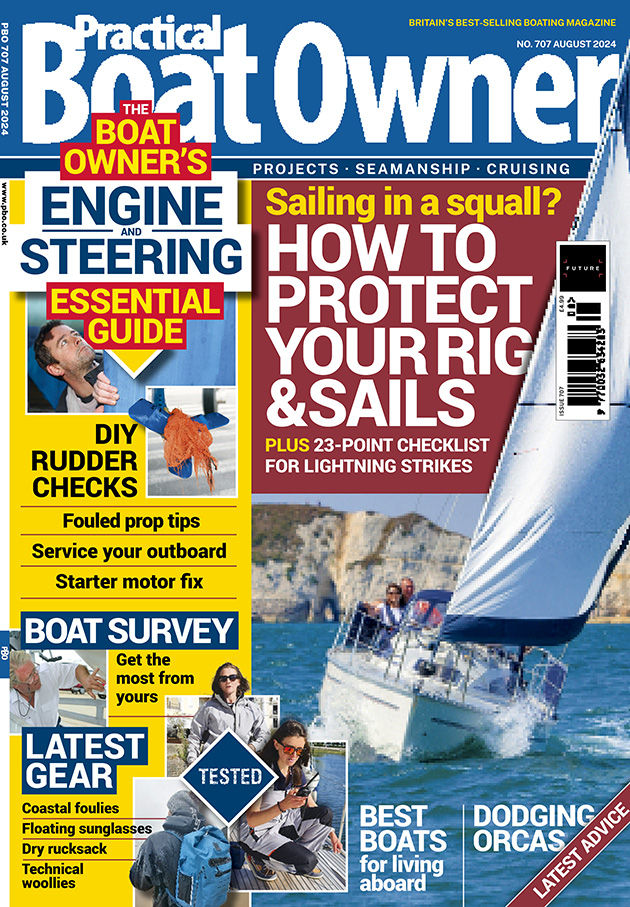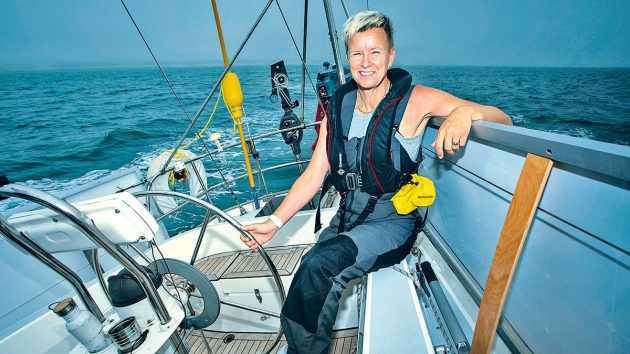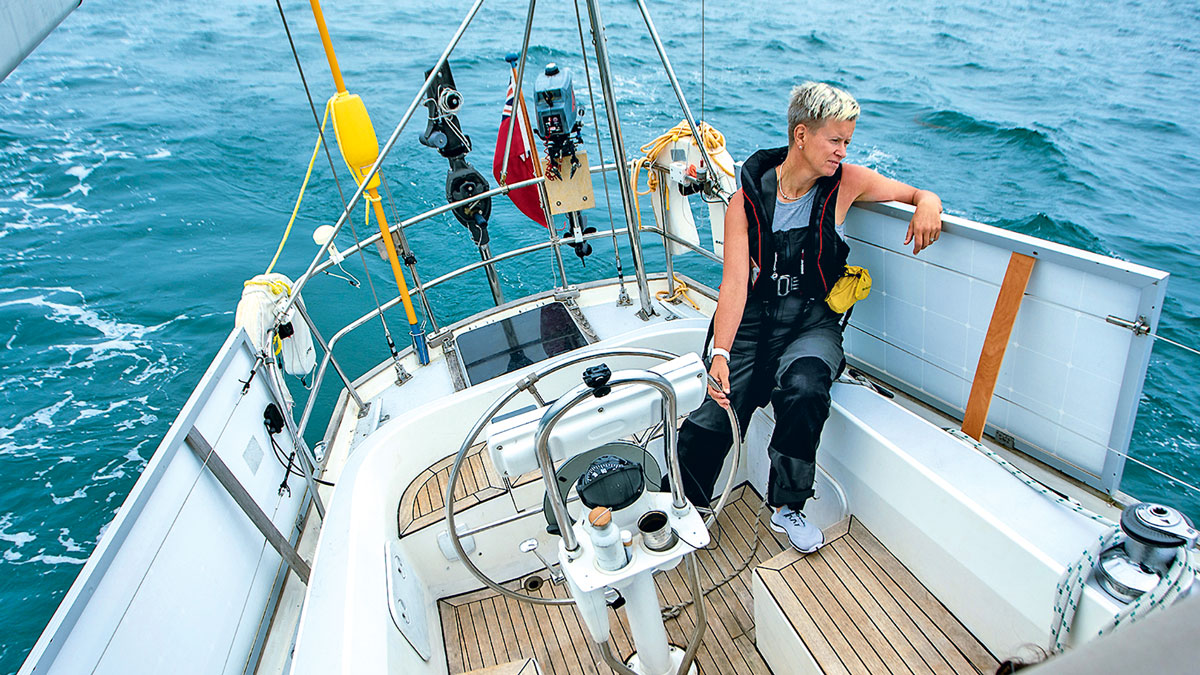Andrew Blyth, who regularly sails his 9m Maurice Griffiths cutter single-handed, describes a selection of methods for dealing with tricky berthing and anchoring situations when single- or short-handed
Solo sailing: Berthing alongside
This is challenging when single-handed as you have to take both bow and stern lines across when landing.
If anything slips, your boat may drift away, and if you drop one of the lines your fenders may be in the wrong place.
If both lines are about half as long again as your boat and you tie the ‘free’ ends together, when you step off your boat it is less likely you will drop one or both of them, especially if they are looped around your arm leaving both hands free for clambering aboard the neighbouring boat or pontoon.
You can then use the bow line to form a breast rope, then lead it aft as a spring, before detaching the stern line and doing the same
Captive tripping line

After a couple of bad experiences with fouled anchors, I always like to use a tripping line.
There are two usual ways of rigging this: either to a free-floating buoy or a longer line led back aboard.
But when solo sailing, retrieving the tripping line at the same time as the anchor cable is fraught with the danger of fouling your own propeller.
So I developed a captive tripping line led from the crown of the anchor up through shackles fastened at intervals along the cable, and terminating on the cable.
In this way, both the cable and tripping line are paid out and retrieved together.
If the anchor fouls, then hauling in on the tripping line and slacking off the cable works in just the same way as with a ‘conventional’ arrangement.
Of course, the line must be rigged so that the main pull is always taken by the chain.
This method also prevents people from picking up your anchor buoy with the mistaken idea it is a mooring.
Picking up a buoy

I find it is best to make my approach aiming about 1 to 2m to one side of the buoy, which keeps the buoy visible until it is abreast the bow.
I then give the boat a sheer towards the buoy, so that the current and/or wind will carry us onto the buoy.
It is better to overshoot very slightly, so that the prospects of making contact are more certain.
With the engine in neutral, you can then go forward to pick up.
If the buoy is a large one with a ring in the top through which a line must be passed, then the line needs to be attached and ready before even approaching the buoy.
However, in windy or choppy conditions when this operation can be impossible, it is helpful to prepare a sinking line as a loop with both ends attached to the bow, and then to throw the loop over the whole buoy so it snags under the buoyant part.
This secures the boat temporarily while a line is passed through the eye in the usual manner.
“Springing off” a pontoon

The technique of ‘springing off’ to get off a quay or pontoon seems daunting and difficult if single-handed, or even if your crew is not very quick with lines.
But it is possible. I once found myself having to spring off and go astern out of a marina berth when a strong wind was pressing me onto the pontoon and would have caused the boat to foul ahead if a spring was not rigged.
For both purposes I needed a head spring, but how could I possibly release it when I needed to go astern?
I rigged a spring from the bow to a pontoon cleat amidships, attaching it with a small bowline that engaged over one horn of the cleat but was not big enough to drop over the whole cleat.
The length was such that the line could not possibly foul the propeller.
After suitably fendering the bow and slipping the aft breast rope, I was able to go ahead with full rudder to get the stern into the wind and away from the pontoon, then go hard astern.
The spring slipped neatly off the cleat and trailed in the water until I could round up into the wind and retrieve it.
The boat was under total control at all times, and no paint was damaged!
If you have your own solo sailing tip, do email us at pbo@futurenet.com
Continues below…
Solo yachting: sail and power boats for sailing alone
Duncan Kent looks at sail and power boats under 40ft in length that are easily managed by the single-handed sailor
Coming alongside – essential skills for shorthanded crews
Coming alongside can be tricky for singlehanded and short-handed sailors. Øyvind Bordal has some sailing skills that will come in…
14 tips for single handed anchoring
Ben Meakins tries out some methods for dropping and recovering the anchor for singlehanded sailors in crowded anchorages
Sailing solo: how to go from crewed to single-handed
Round the world sailor Ian Herbert-Jones shares valuable advice on how to transition from crewed to single-handed sailing
Enjoyed reading Solo sailing tips – anchoring and berthing?

A subscription to Practical Boat Owner magazine costs around 40% less than the cover price.
Print and digital editions are available through Magazines Direct – where you can also find the latest deals.
PBO is packed with information to help you get the most from boat ownership – whether sail or power.
-
-
-
- Take your DIY skills to the next level with trusted advice on boat maintenance and repairs
- Impartial in-depth gear reviews
- Practical cruising tips for making the most of your time afloat
-
-
Follow us on Facebook, Instagram, TikTok and Twitter








